Finding the best bike saddles for commuting is important. Apart from being uncomfortable, an ill-fitting saddle can also cause lower back problems, and can even give you a poor posture. Saddles that are too narrow don’t support the pelvis or bone structure, whereas an overly wide saddle causes the dreaded chafing.
That’s not to mention saddle sores, and a range of other rarer problems including nerve damage to the perineum. The problem is even worse on the commute, which necessarily means you’ll be on your bike every day. A poorly fitted or poorly designed saddle will wreak havoc with your body, leaving you feeling tired before you’ve even reached the office.
Finding the best bike saddle for commuting can seem like hard work, however. There are plenty on the market, ranging from budget friendly models to more expensive, premium offerings. The kind of saddle you need depends on your riding style, measurements and posture, but it’s possible to narrow down the list. Here’s a look at the best commuter saddles currently on sale.
Finding a Comfortable Bike Saddle [Key Considerations]
Given the variety of saddles available, it should come as no surprise to learn that there are lots of different factors to consider. Narrow vs wide is a common question, but you also need to think about the weight, the type of material and the shape (round, semi-round or flat).
Some saddles also come with a cutout. Whether you opt for this is a matter of personal preference but it’s designed to ease pressure on the soft tissue area. Some people also feel that cutouts help with ventilation, keeping the rider cool. Padding is another important area to consider. Although it seems logical to opt for saddles with deep padding, this isn’t always the best solution. Thick padding that compresses over time warps and puts pressure where it’s not wanted. Modern saddles tend to use strategic rather than all-over padding.
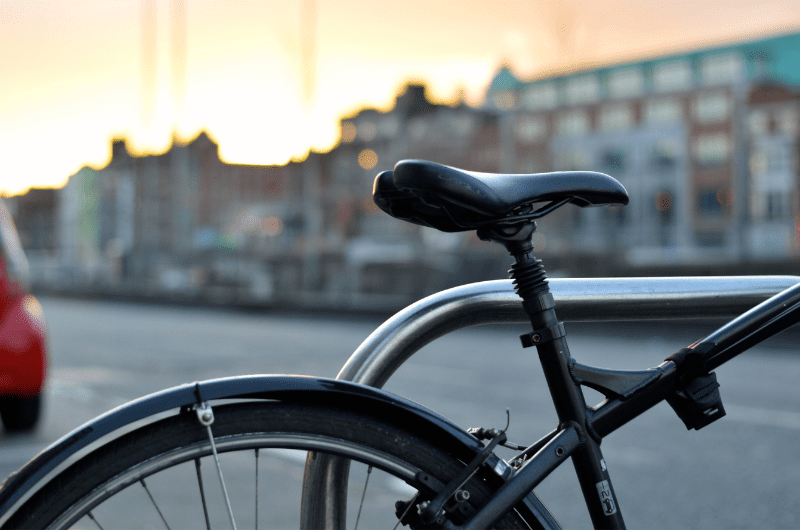
You can usually opt for extras too. Additions like reinforced corners prevent wear and some will have attachments for bags. Some saddles are designed specifically for men or women, others are unisex. Saddles should never be uncomfortable and you should never feel that you have to put up with a bit of pain or numbness. A well-chosen saddle that takes into account all of these key considerations will make riding a joy.
Narrow vs Wide Bike Saddle
Perhaps the biggest question to ask when looking for the best bike saddle for commuting is whether to go for narrow or wide. Generally speaking, wide saddles are best for people who cycle in an upright position. Narrow saddles are preferable for those with a lower riding position.
These are generalisations, though, and there’s more to saddle width than just riding position. A wider saddle is usually better for casual or commuter cycling because it offers extreme support for the pelvis and eliminates chaffing. It also minimises pressure on the thighs. Many simply consider wider saddles to be more comfortable on a casual ride.
Wider saddles do come with disadvantages though. They limit how quickly you can move your legs, making for a slower journey, and if you go too wide you’ll actually cause more chafing. Narrow saddles don’t interfere with the cycling motion so you can generate more speed. They’re also more efficient (and save energy) because they help you to maximise leg movement. Narrow saddles tend to be used by professional cyclists to extract maximum performance.
The downside to this, of course, is that many new or casual cyclists find them uncomfortable. They provide less support, and if they’re too narrow, they can even be painful. Of course, it all comes down to personal preference, but more casual commuter cyclists tend to prefer a wider saddle.
Bike Saddle Size
Deciding between a narrow/wide saddle is only part of the battle. Saddle size is extremely important because saddles are supposed to support seat bones. If the size isn’t right, then the saddle will be misaligned, and it won’t offer the same levels of support and you’ll end up feeling extremely uncomfortable.
Poor saddle sizing is the number one reason that cyclists experience discomfort as they ride. Even the best saddle from a renowned manufacturer won’t be any good if you get the sizing wrong, and it might even do longer-term damage, especially to your posture. People with badly sized saddles often find themselves walking with poor posture, or suffering from lower back pain.
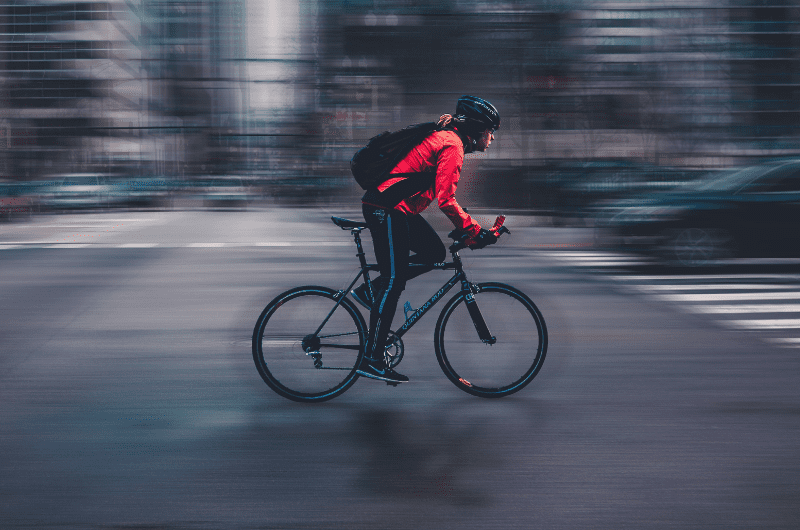
What Size Bike Saddle Do I Need?
It’s easy to find the right bike size saddle with a little effort. Nearly all brands feature a wide range of sizes, and getting the right dimensions is often just a matter of measuring and then taking the saddle for a test ride.
Cycling shops have various methods for measuring the distance between your sit bones. These might involve memory foam (which moulds to your shape), some kind of gel or simply a pad. If you want to do this yourself at home you can use tin foil. Place the tinfoil on a step or stair and then sit on it, mimicking your riding position. When you stand up you’ll notice two depressions in the foil – measure the distance between the two and then add 25-30mm. That’s your saddle size.
Test rides are extremely important too. You’ll invariably be allowed to take your saddle for a ride but the duration matters. Try to cycle with the saddle for at least an hour. Some will be instantly uncomfortable, but others will take time. That’s particularly important if you plan to buy a more expensive saddle, which is a long term investment. Be sure to check whether the manufacturer offers returns or substitutions, too.
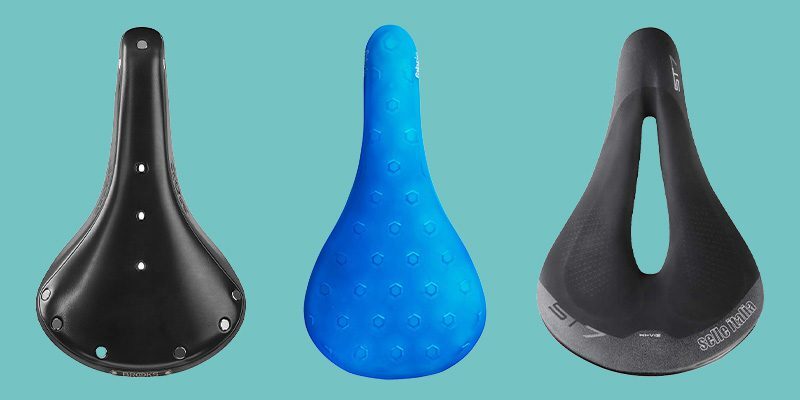
Best Bike Saddles for Commuting [Top 3]
1. Brooks B17
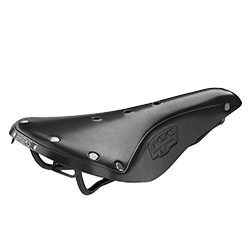
Features:
 Premium leather – moulds to your shape over time.
Premium leather – moulds to your shape over time.
 Extremely high build quality
Extremely high build quality
 Waterproof, durable and rigid for maximum support.
Waterproof, durable and rigid for maximum support.
Brooks Saddles, of course, have a storied history and are considered some of the best in the world. Not many saddle companies can boast of a saddle that’s been popular for over 100 years, but that’s exactly what the B17 is.
Quite simply, this is a premium saddle, and one of the best bike saddles for commuting. It’s wide enough to offer support on the daily commute, the leather is waterproof, it looks stylish, is handcrafted, comes with a 10 year guarantee and is extremely durable. Leather saddles might look uncomfortable, but it’s the rigidness that makes them so effective. They won’t yield or compress and will always offer you maximum support. Better still, leather moulds to the shape of your body over time, so you’ll end up with your own, personal saddle.
Brooks saddles are expensive but many cyclists consider them a worthy investment. They’re made using premium grade leather and the build quality is incredibly high. The result is a saddle that will last for at least ten years and potentially much longer. Since leather saddles mould to the body, owners are reluctant to replace them. Fortunately, with build quality this high, many find that they don’t have to. Brooks is a prestige brand with many imitators, so there are alternative choices if the price is too much.
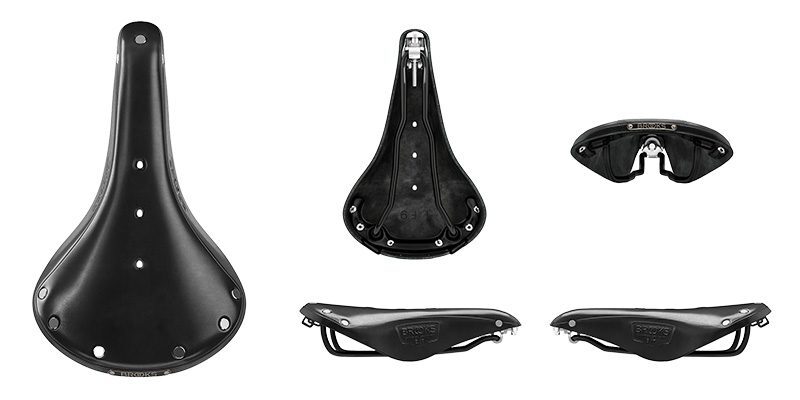
Brooks B17 [PROS + CONS]
| PROS | CONS |
|---|---|
| Rigid leather is very supportive | Expensive |
| Moulds to your shape | Retro aesthetic isn’t to everyone’s taste |
| High quality, premium saddle | A target for thieves |

2. Fabric Cell Elite Radius
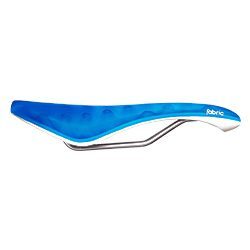
Features:
 Innovative pyramid cells distribute weight evenly
Innovative pyramid cells distribute weight evenly
 Foam doesn’t compress or become hard
Foam doesn’t compress or become hard
 A lightweight option
A lightweight option
If the traditional style of the Brooks doesn’t appeal, then you’ll love the ultra-modern aesthetics of the Elite Radius. It’s substantially cheaper too, and about much than just looks. An innovative core of collapsible pyramid cells makes for unparalleled comfort.
The design is similar to that found inside running shoes. The air sprung interior distributes your weight across those pyramid cells, offering support and comfort in equal measure. The Elite Radius was designed specifically for the commute so the width is just right. Foam saddles sometimes have a habit of compressing and turning hard under pressure, but the air springs stop this from happening.
It’s light too, so it won’t add much additional weight to your bike. If you ride in an upright position then there’s little reason not to opt for the Elite Radius, but lower riders might want to look elsewhere. That said, if you’ve struggled with unwanted pressure points in the past, then the even weight distribution offered here will revolutionise your rides.
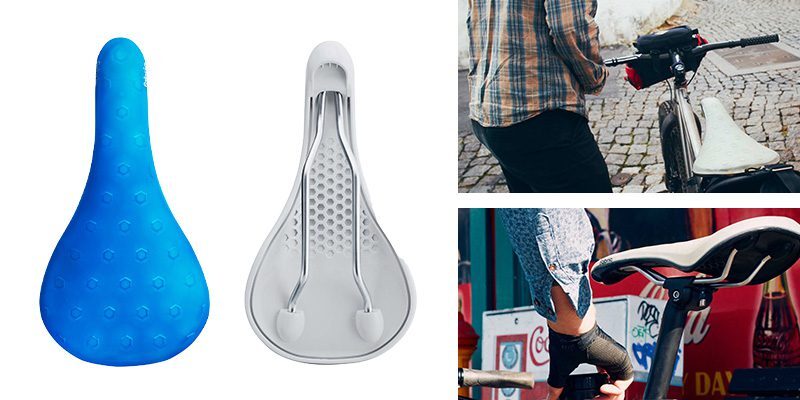
Fabric Cell Elite Radius [PROS + CONS]
| PROS | CONS |
|---|---|
| Even weight distribution for great comfort | Not the best for lower riders |
| Acts like memory foam | Foam can get warm |
| Very light | Doesn’t feel as durable as leather |

3. Selle Italia ST7 Vision Superflow
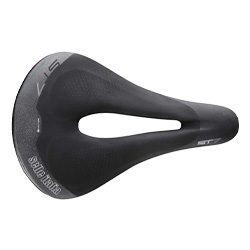
Features:
 Shock absorbers mean an extraordinarily smooth ride
Shock absorbers mean an extraordinarily smooth ride
 Superflow keeps things cool
Superflow keeps things cool
 LED light
LED light
The ST7 is the only saddle on the list to come with shock absorbers for a truly luxurious ride. It’s capable of handling bumps and jolts with ease, leaving you with a smooth ride on even the busiest of commutes. If the roads around you aren’t in the best condition, this might be an ideal choice.
As well as those shock absorbers, the saddle comes with gel inserts for additional comfort. It also has an integrated LED for late-night commutes or the darker winter months. This safety device makes a big difference. The smooth ride, coupled with enhanced visibility, grants peace of mind.
So-called “Superflow” technology simply means that the saddle is well ventilated – it will stay cool not matter the distance of your commute. Much like the Elite Radius, this was also designed specifically for the daily commute. The level of comfort and shock absorption is enough to transform a ride and something well worth experiencing. Saddles this smooth almost feel as though you’re on a totally different bike!
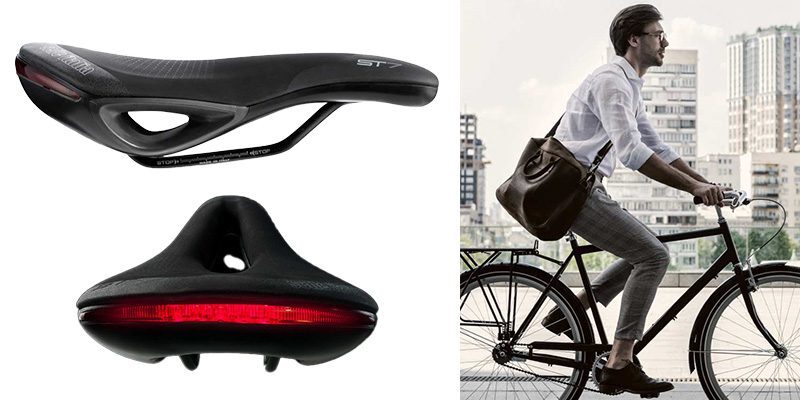
Selle Italia ST7 [PROS + CONS]
| PROS | CONS |
|---|---|
| LED light | Not the most “aero” |
| One of the smoothest rides | Pricey |
| Well ventilated |
The post 3 Best Bike Saddles for Commuting [Find Your Perfect Seat] appeared first on Discerning Cyclist.
![3 Best Bike Saddles for Commuting [Find Your Perfect Seat]](https://bicycle.org/wp-content/uploads/2022/06/black-bike-seat-760x504.png)